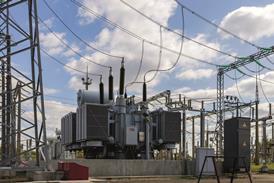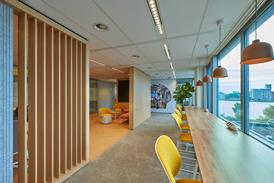- News

All the latest updates on building safety reformRegulations latest
- Focus
- Comment
- Programmes
- CPD
- Building the Future
- Jobs
- Data
- Subscribe
- Events

2024 events calendar
Explore now
Building Awards
Keep up to date
- Building Boardroom
Procurement update: data centre development challenges

Data centre clients are scaling up to deliver ever bigger programmes – so, what are the main client types and the specific procurement challenges in this sector?

01 / Introduction
Data centre (DC) investment is construction’s biggest countercyclical demand story. Global Data reports that the big five tech companies, led by Microsoft, invested $35bn into their DC fleets in 2023. Real estate investment is racing ahead too, and Linklaters has tracked US$22bn of deals in DC capacity in the first five months of 2024 alone.
The DC growth story is well documented. A combination of exponential growth in cloud computing and a gold rush for AI leadership has triggered an unprecedented race for power and fibre connections, data hall floorspace and technical equipment. Additionally, it is also triggering a wave of DC refurbishments as owners upgrade facilities in line with client requirements.
Growth at this pace brings pain as well as promise. Access to power has become hotly contested, particularly as DC development has been blamed for power and water shortages in locations as diverse as London, Dublin and Amsterdam. As a result, owners and developers have shifted their focus of investment away from the core FLAPD markets of Frankfurt, London, Amsterdam, Paris and Dublin to a wider range of second-tier markets including Italy, Spain and the Nordic countries.
Given the importance of first-mover advantage in the digital world, assured day-one delivery is the overriding critical success factor for DC development. The risk cascade flows from the end user – which could be, for example, an AI inference service – through the DC occupier to the developer or constructor. Penalties are substantial, but delivery is complicated by shortages of plant and equipment and by exacting user-testing at completion. As projects are scaled up to 80MW and beyond, representing an initial construction investment of close to €1bn, the risk exposure for clients and contractors is huge.
Unlike most real estate sectors, which have a regional focus, DC clients are global operators delivering regional programmes. Some DC requirements – including edge processing, regulated personal data and secure facilities – are location sensitive, but a great many compute and storage requirements are footloose. Clients need to be remarkably flexible – adapting their designs to meet new technology requirements while also adapting their procurement strategies in line with local circumstances, as well as a scarcity of equipment, industry capacity and capability.
In this article we will examine the complexity of the DC procurement landscape – including the different characteristics of key players in the market and also ways in which DC procurement differs from other complex building types. We highlight practical solutions to the challenges that clients and their supply chains face in a gold rush market that has become increasingly important as a source of industry workload.
Read more…
This is PREMIUM content
available to Building Boardroom and Building subscribers only
You are not currently logged in. Building Boardroom Members and Subscribers may LOGIN here.
Become a Building Boardroom Member

to read this report now, plus have unlimited access to:
- Exclusive research and client insight to support your strategic planning
- Benchmark reports, and proven tools to aid your business development
- Attend bespoke community events…plus much more
Alternatively…
Become a Building subscriber
to gain access to building.co.uk for the latest news, expert analysis & comment from industry leaders, plus data and research.
Already a Boardroom member? Log in here.

















